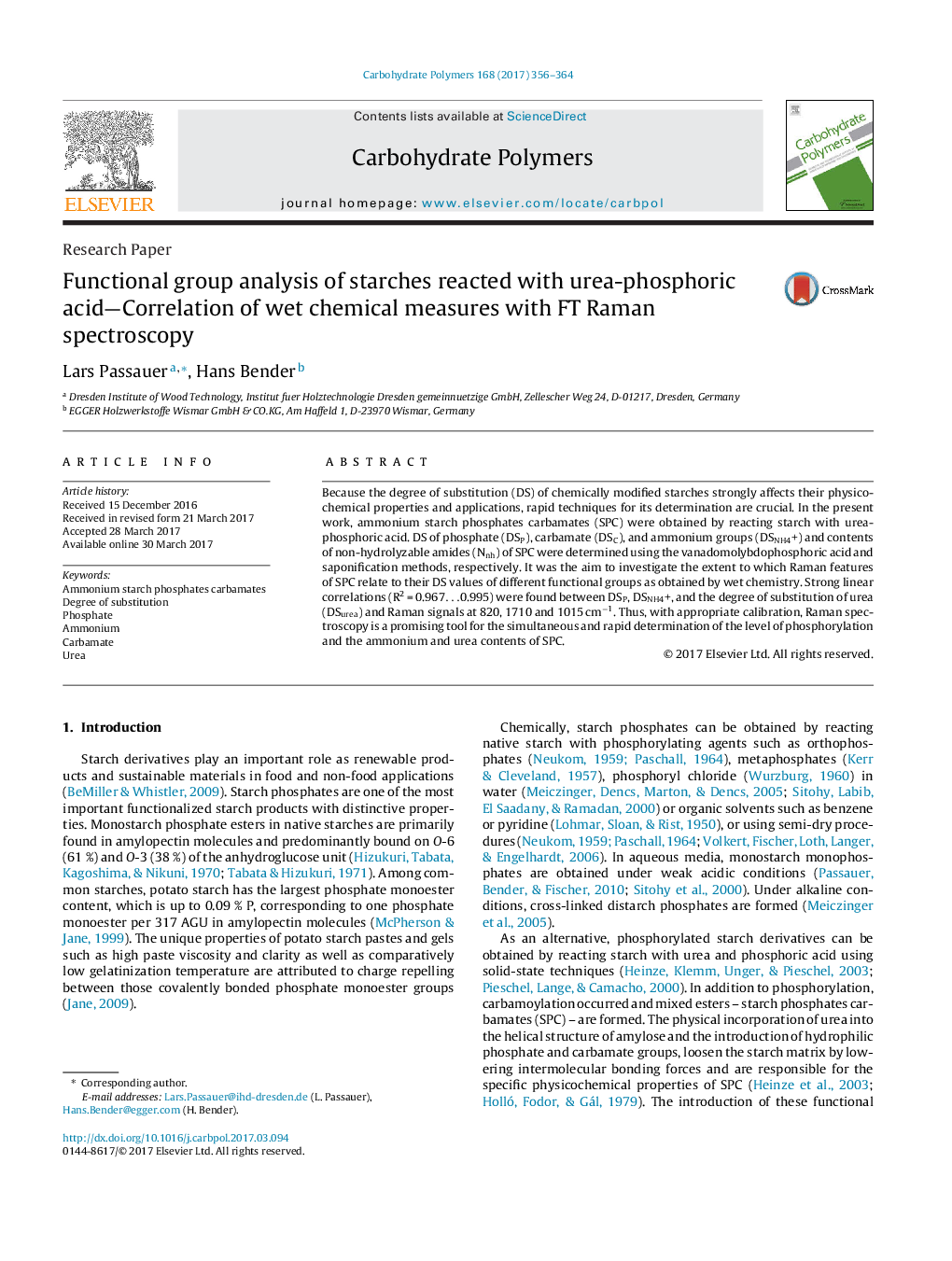| Article ID | Journal | Published Year | Pages | File Type |
|---|---|---|---|---|
| 5157128 | Carbohydrate Polymers | 2017 | 9 Pages |
Abstract
Because the degree of substitution (DS) of chemically modified starches strongly affects their physicochemical properties and applications, rapid techniques for its determination are crucial. In the present work, ammonium starch phosphates carbamates (SPC) were obtained by reacting starch with urea-phosphoric acid. DS of phosphate (DSP), carbamate (DSC), and ammonium groups (DSNH4+) and contents of non-hydrolyzable amides (Nnh) of SPC were determined using the vanadomolybdophosphoric acid and saponification methods, respectively. It was the aim to investigate the extent to which Raman features of SPC relate to their DS values of different functional groups as obtained by wet chemistry. Strong linear correlations (R2 = 0.967â¦0.995) were found between DSP, DSNH4+, and the degree of substitution of urea (DSurea) and Raman signals at 820, 1710 and 1015 cmâ1. Thus, with appropriate calibration, Raman spectroscopy is a promising tool for the simultaneous and rapid determination of the level of phosphorylation and the ammonium and urea contents of SPC.
Related Topics
Physical Sciences and Engineering
Chemistry
Organic Chemistry
Authors
Lars Passauer, Hans Bender,
